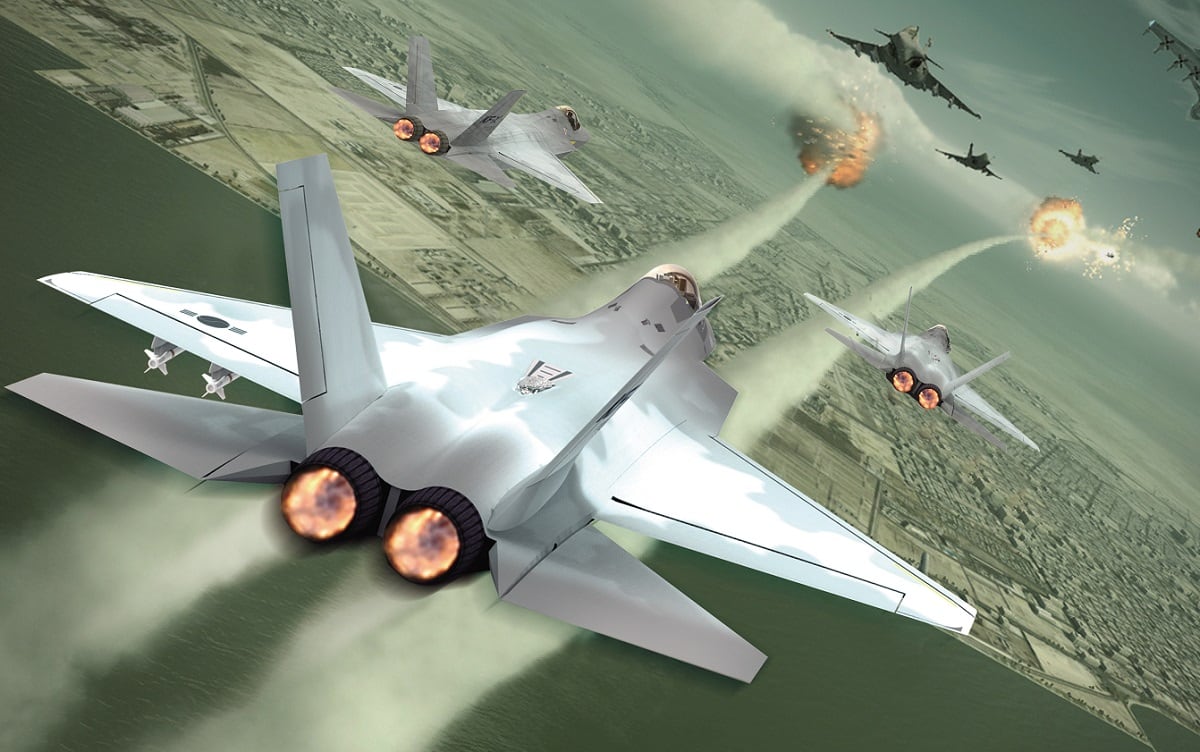SEOUL, South Korea ― South Korea’s state-funded arms development agency plans to develop an indigenous, air-launched, long-range cruise missile to be equipped with the KF-X fighter aircraft under development, according to defense officials.
The Agency for Defense Development, or ADD, under the wing of the Defense Acquisition Program Administration, is scheduled to pick a local partner company no later than September for exploratory development of the missile, modeled after the Taurus KEPD 350, manufactured by the German-Swedish firm Taurus Systems.
“As part of offset deals to buy Taurus missiles for the past years, South Korea received some part of the Taurus KEPD 350 technologies,” an ADD official said, speaking on condition of anonymity due to the sensitivity of the missile program.
“Based on the transferred Taurus technology, we’ll develop our own air-to-ground, long-range missile to be integrated into the KF-X fighter jet, which is expected to be operational by 2026.”
At least 120 KF-X jets are to be produced after 2026 to replace the aging fleet of F-4s and F-5s. At least 50 units are to be manufactured in Indonesia, the sole KF-X partner obliged to burden 20 percent of the development costs for the 4.5-generation KF-X jet.
RELATED

Hanwha Corporation and LIG Nex1 are competing for the air-to-air missile project worth some $730 million. Both companies have unveiled the concept designs of their 3,000-pound Taurus-class missile with a range of 400 kilometers.
“We have long and successful track records of developing indigenous cruise missiles with guidance systems, including ship-launched Haeseong-series cruise missiles,” an LIG Nex1 official said, speaking on condition of anonymity. “We’ve accumulated enough know-how and technology to develop an air-launched cruise missile.”
Hanwha, which has merged multiple defense companies to become South Korea’s largest defense manufacturer, showed confident about the missile competition.
“It’s true we’re the second mover in the guided-missile field, but we’ve made substantial progress in developing precision-striking missiles with the concentration of budgets and human resources,” a Hanwha public affairs official said.
Ahn Seung-beom, military analyst and publisher of The Defense Times in South Korea, said the air-launched missile project marks South Korea’s first-ever effort of its kind.
“This is the first meaningful step forward developing South Korea’s own air-launched missiles, which were largely imported from U.S. and European nations,” Ahn said. “Beginning this air-to-ground missile development program, more air-launched missile projects are to begin.”
He referred to efforts to modify the Shingung short-range, surface-to-air missile into an air-to-air missile modeled after Raytheon’s AIM-9X, and plans to develop the ship-to-air Haegung missile into a long-range, air-to-ground one as potential projects to be materialized. Both Shingung and Haegung missiles were co-developed by ADD and LIG Nex1.
On June 29, the Defense Acquisition Program Administration unveiled the preliminary design of the KF-X. The design, code-named C-109, revealed the KF-X would be armed with European air-to-air missile systems.
In the disclosed photos of the KF-X design, four Meteor long-range, air-to-air missiles developed by MBDA are shown to be nestled under the fuselage, while two IRIS-T short-range, guided, air-to-air missiles are mounted on respective wingtip launchers.
The arms procurement agency originally preferred fitting the KF-X aircraft with U.S. weapons systems, such as Raytheon-built AIM-120 and AIM-9 Sidewinder missiles, but the U.S. government has yet to approve the export license of the missiles.
Email: jeff@defensenews.com
Jeff Jeong was the South Korea correspondent for Defense News.








